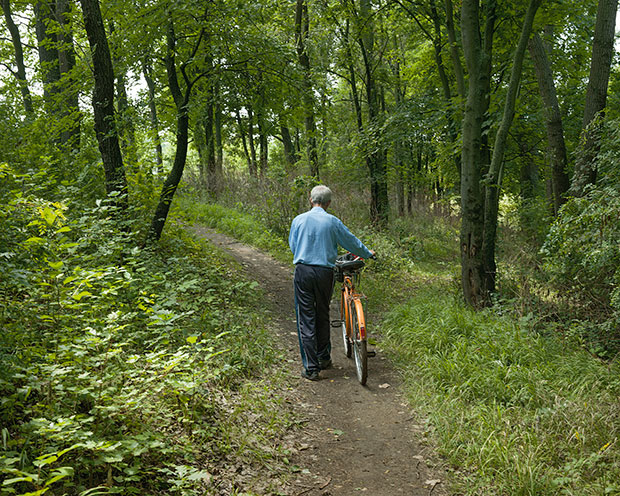
Stephen Shore on his most moving work ever
The legendary photographer tells us about his experience photographing Holocaust survivors in Ukraine
Lovers of photography, of art, will know that every now and again you come across an image that quite literally stops you in your tracks, like someone accidentally pressed the reset button. The first time we looked through Stephen Shore's new book, Survivors in Ukraine we experienced that elusive moment. And then we turned a page and experienced it again. And then we turned another page and …. you get the picture. Because Shore got the picture – so many of them, in fact.
What comes through, perhaps more than anything, when you look at the subjects of Survivors in Ukraine is a universal sense of home, of one's place in the world. The book is an astonishingly powerful portrait that intimates what it was to escape what was for one long moment, quite literally, hell on earth, and to pick up, reconfigure and live a life denied, and so nearly extinguished, almost three-quarters-of-a-century ago.
It's easy to overlook the absolute expertise a photographer such as Shore brings to a project like this, so easy to miss all the little details that create the whole - an affirmation of life in all its DNA-fuelled determination. Shore’s images are poignant, full to the brim with love, true nobility and, as such, are a visceral photographic homage to the human spirit. And all the above is probably an understatement. We called Stephen and asked just how the project came about.
"Ginger (Shore’s wife) had come across this foundation called the Survivor Mitzvah Project, set up to help these people. If they had lived further west in Europe they would have been sent to concentration camps. Had they survived those concentration camps they would now be receiving reparations from the German Government. But because there were no concentration camps, in what was at the time the Soviet Union, they now don’t qualify. These are people who survived by hiding in forests, attics or most likely fleeing to the east. Ginger came across the foundation and we’ve been supporting it for a while. She then had the idea that this would make a really good photographic project and would bring attention to these incredible people. And there isn’t much time to do it because they are all in their late Eighties to early Nineties and are just not going to be around .
It's astonishing that because they escaped they are not eligble for reparations, despite going through incredible hardship They each did something amazing. It’s very easy to wonder why people didn’t just leave at the time. But the changes are gradual. And it’s not that you could see the holocaust coming - this hadn’t happened before. So it wasn’t a case of this is what’s in store for us, let’s get out. And to take the action of abandoning all your possessions and your life, and to take a dramatic action like fleeing is not an easy thing to do. So these people did something 70 years ago that I think is really amazing. I’ve now met 35 survivors and of the 35 only three of them showed any signs of mental deterioration, and as I say, these are very old people. I have the sense that the kind of constitution – both physical and psychological – that led them to be people who survived 70 years ago keeps them being survivors today.
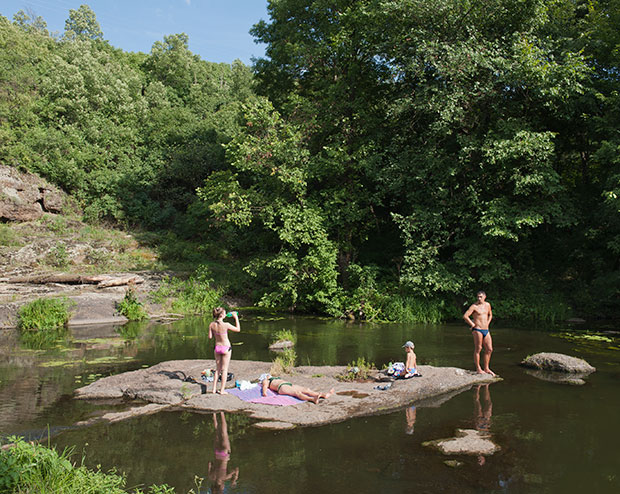
How did you gain their trust, make them understand you were on their side and wanted to tell their story? That’s a very important question. I went with the blessing of the foundation so I was travelling with someone they had met before. The foundation has sent someone to see them all probably a couple of times a year and give them money. You’re not just sending them a wire to their bank account, someone has to come and physically bring them support. So that person was accompanying me and I was also bringing them support. They were very welcoming. And in fact, all of them, no matter how poor they were, prepared food for us. It was a terrific event for them that someone would come and visit.
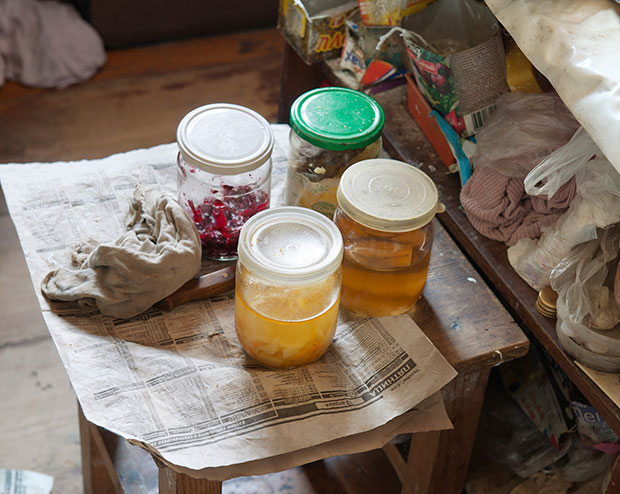
Did they have any idea of who you were or the body of work you’ve amassed over the years? No, they had no idea. They knew I was interested in them and I think there were times when some of them felt grateful that someone wanted to hear their story, and was interested in their lives. I think they felt able to tell their story to this visitor with more directness than they might even to their children who they may not want to burden with it.
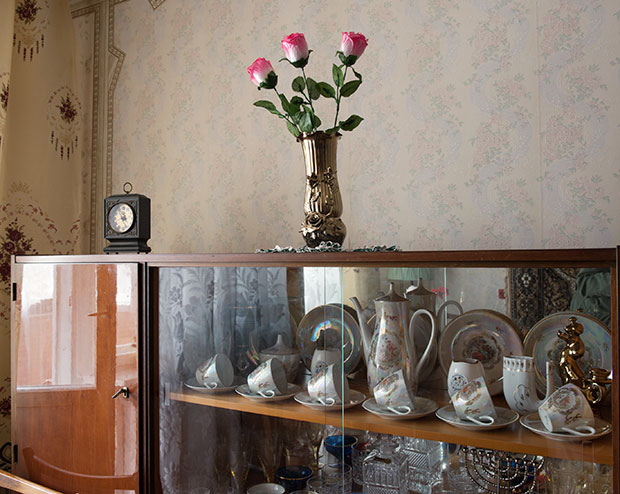
It must be an incredibly humbling experience just standing in these people’s homes. Did you ever worry about getting a complete emotional and conceptual grip on the project? That’s a very interesting question. I find that when I work I just work. And I didn’t really question it. I did some research before I went there. I read a number of books on the period and the most impressive for me was a book called Bloodlands by a Yale historian named Timothy Snyder. I knew that I had roots in Ukraine (Shore’s grandfather and father lived there) but I wasn’t expecting to find any trace of them, they left well over a century ago, and obviously weren’t affected by the holocaust. But still there was this connection and then, when I got there, I found myself in a heightened emotional state. And I can’t say if it’s the knowledge I brought with me or if it’s my personal connection to the country but something happened and I found that almost every moment I was feeling an intense emotional charge. When I went back for the second trip I didn’t know if this would happen again and I found that yet again the same thing happened and I think this is part of what is going on with these pictures.
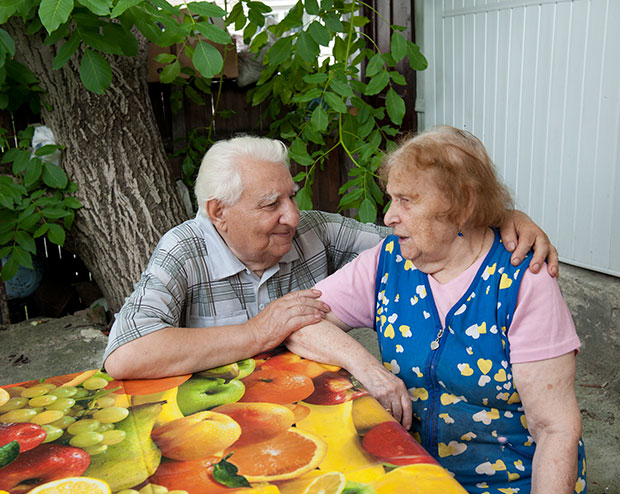
Did your view of what you were doing change after you read Bloodlands? What I read in Bloodlands I can’t photograph. First of all it happened 70 years ago. Bloodlands begins before Hitler with Stalin so we’re talking about things that happened 80 or 90 years ago. But what I can do is see the current world through a lens that is informed by this and is informed by my own emotional resonance. For me, the central aesthetic challenge was: can I photograph this situation without being emotionally manipulative and by not relying on one of the most charged words in our culture, holocaust? I could accomplish that by taking very neutral pictures but that’s not what I wanted. So it was a case of: can I really delve into this? Can I look at these people in their homes and in their villages and their lives and communicate something real about them but at the same time, not be manipulative in doing that?
As great as the pictures are, did there come a point when the story became more important than the photographs? I would say they are more important than the photographs; I would put it that way. And I hope that the photographs bring some attention to them and help bring some support to them.
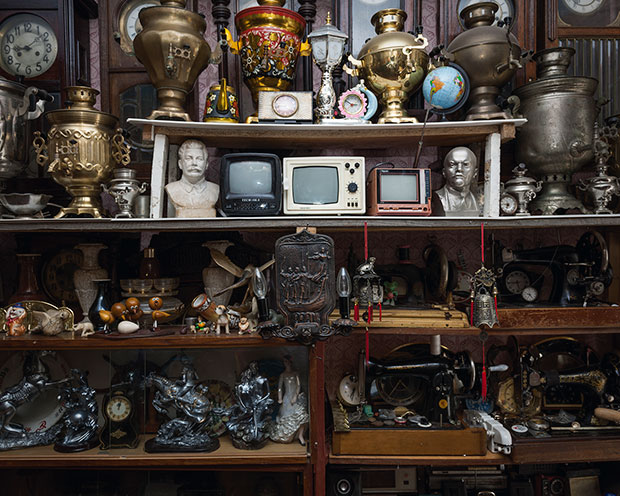
It’s a horribly over used word but the photographs in the book do have an incredibly immersive quality. The photographs are incredibly intimate and, looking at them, you really feel like a guest in these people’s homes and lives Sometimes when people sit down to write an essay they find they use a language that’s a little different from the language they use when they speak. And I wanted to get to more like the language of speaking or the visual equivalent of it that in a way makes it personal. It’s both my personal experiences as I’m meeting them and going through their homes but it’s in a way anyone’s personal experience. I would say that this was intuitive and what I was conscious of is that I’m often photographing in a way that in the past I would have used the word transparent to describe - where I’m not calling attention to my decisions as a photographer. So the pictures were informed by the experience of seeing.
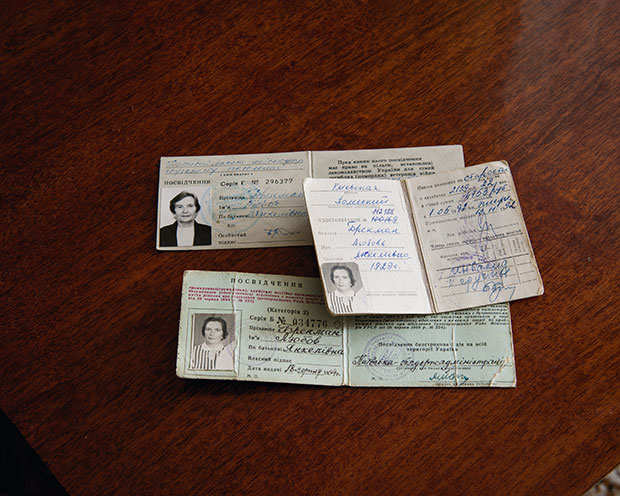
There seems to be an almost subliminal focus on the things that keep the subjects alive, keep them being survivors - the occasional focus on food laid out for preparation, or an array of drugs on a bedside table When I’m working I’m in a state of mind where I’m not thinking in verbal terms I’m thinking visually. I’m in a very focused mental state when I’m working and when I was doing this other than the time I spent travelling I was in this state all the time. And that’s what I’m doing I’m just there taking pictures and what I’m feeling colours it. It’s also the product of years experiencing culture. It’s one thing I’ve learned and maybe honed a bit doing projects in Israel and the West bank and Abu Dhabi, in the past few years - that idea of going to a culture that’s foreign to me and taking advantage of the fact that I could be seeing it with the eyes of a foreigner but at the same time taking a picture and finding things that I think are essential to the culture, that are unique to the culture or at the same time things that are culturally universal, avoiding tourist pictures, trying to get to the heart of a culture. I’ve been looking at the products of society for a long time and I’ve been photographing it for a long time, so I’m not even thinking consciously about it now but I know that this is informing what I’m choosing to photograph.
As you go through life does faith play a bigger part in your artistic output? I think it plays a greater role in my personal life. Everything that contributes to who I am employs a role in what I’m doing when I’m photographing, but when I’m photographing, I’m not thinking about any of it. I think it does play a role in what the end result is because it plays a role in who I am.
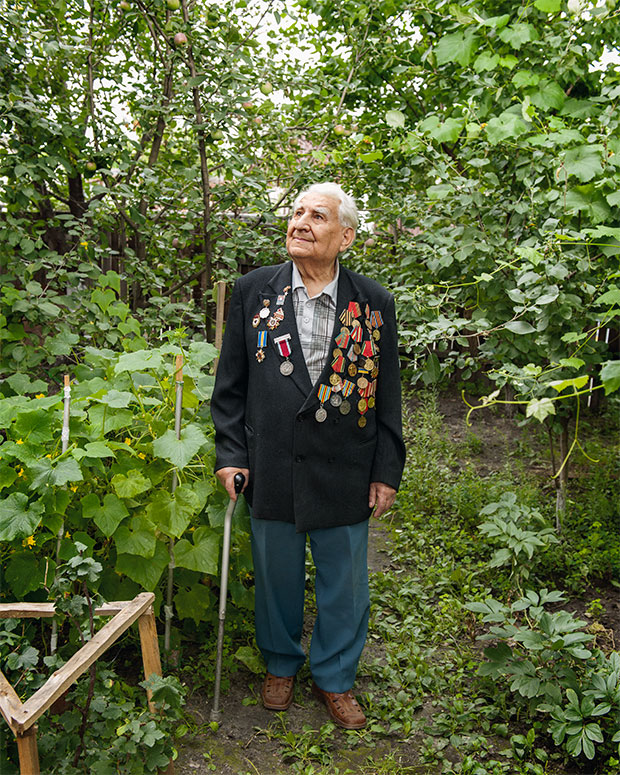
Tell us about one of the characters. The man on the front has a good few medals pinned to his chest The vast majority of the people I photographed were able to survive by fleeing east and had very similar stories. They would leave their possessions, take a horse drawn carriage and go east and get to the Volga and swim across the Volga. Eventually a lot of them got to Kazakhstan where they worked on collective farms. But the men had another option, which was to join the Red Army. The man on the cover of the book is called Tzal and Tzal was one of those who did this and he fought in the battle of Stalingrad.
And in his home there were busts of Stalin and Lenin. The people in Ukraine suffered tremendously under Stalin but there were a couple of people who had busts of Stalin and this was because it was through the Red Army that they survived. It did not matter how bad Stalin was, he was better than Hitler, who simply offered extermination.
Tzal, through a translator, told me a story about the battle of Stalingrad and how he had come across a Nazi soldier who was dying and calling out for water. Since Tzal’s first language was Yiddish he could understand the German. Tzal gave him his canteen and as he gave it to the soldier he said you kill Jews yet here I am giving you water. And a superior officer witnessed this and called him up on it accusing him of aiding the enemy. Tzal said, when the man had a gun he was my enemy and when he was dying he wasn’t. Tzal is an amazing man, he’s now 92-years-old."
Learn more about Survivors in Ukraine and buy a copy from the store here.